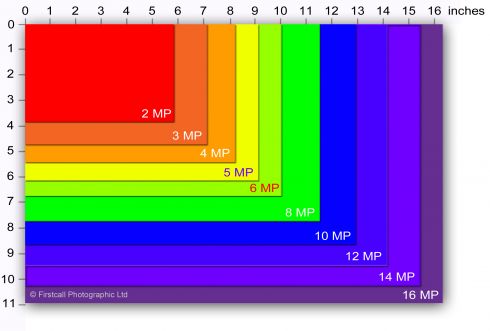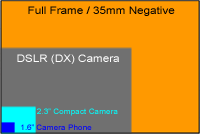Digital Basics: Pixels
Contents:
Megapixels and Image Quality: Not all pixels are created equal
Size and quality of the optical lens
How many pixels do I need for a print?
Table 1: Desired print size and quality
Table 2: Possible print sizes by camera megapixel number
Graphic: Print sizes in inches at 300dpi
Introduction
|
A pixel is a single point in a graphic image. The technique is similar to the way Pointillist artists used to build up an image from separate dots of pure colour in the late 19th Century. However, unlike pointillism, pixels are of identical size and neatly arranged in rows and columns. Pixels are also so close together that they appear connected. Generally speaking, the more pixels are used to represent an image, the closer the result can resemble the original – though this general rule does not always hold true. Each pixel stores (colour) information in form of a number variable. How much colour information a pixel can record or display depends on its colour depth, which is measured in bits per pixel (bpp). Some camera sensors can only record 2 different values (monochrome); others can differentiate between 65,536 (highcolour) possibilities. |
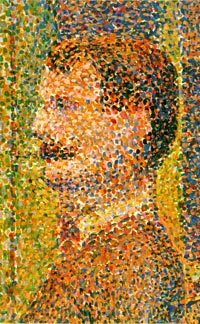 |
| Georges Seurat – Detail from “La Parade” (1889) showing pointillism |
Megapixels and Image Quality: not all pixels are created equal
A common misconception is that a camera’s Megapixel number is a fair and reliable measure of comparison between cameras. The sad truth is that literally nothing could be more misleading: even if 2 cameras have the same number of megapixels, it does not mean that they will deliver equal image quality for a number of reasons:
How many pixels do I need for a print?
|
A megapixel is simply a unit of 1 million pixels. If you want to make a photographic print of a certain resolution and detail then there is a maximum print size you can achieve for any given number of megapixel. It is often argued that the ideal photographic resolution is 300 dots per inch (dpi). However you may find that a resolution of 200 dpi is perfectly acceptable, especially if the photograph is large and will therefore be viewed from a distance. Many magazine articles and posters are printed at a resolution of less than 300 dpi. However, the following tables and graphs may prove helpful. The first one provides guidance on approximately how many Megapixels are required to make a certain size print in either medium or high quality: |
Table 1: Desired Print Size and Quality
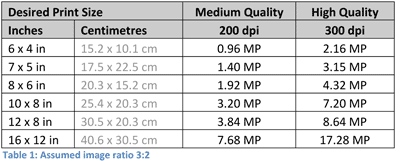
This second table starts with your camera’s (or photo’s) megapixel size and indicates what maximum print sizes can be achieved in medium (200dpi) and high quality (300dpi):
Table 2: Possible Print Sizes by Megapixel numbers
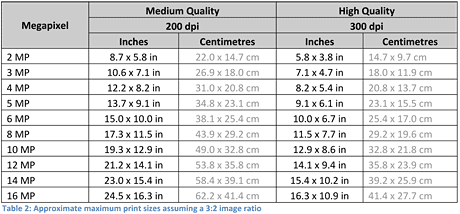
Graphic representation of the above tables:
